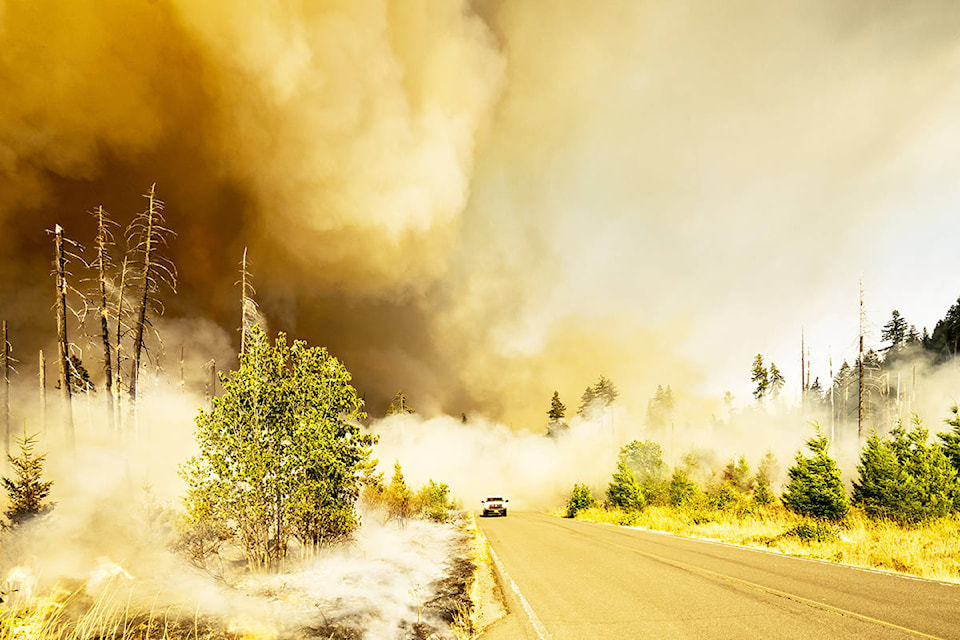The District of Clearwater (DOC) recently held a Community Wildfire Protection Plan (CWPP) open house, where representatives from the CWPP project team offered information and explained what the plan is all about.
Alexandra Pogue, a wildfire risk management specialist with Forsite Consultants, led much of the Nov. 19 meeting and told the audience the basics CWPP.
“We are looking to identify the risks in the community, develop strategies to mitigate the risks, build awareness in the community then ultimately, enhance the resiliency,” she said.
“You can never eliminate all the risks, (but) we’re going to do everything we can to put Clearwater in the best position to be resilient toward fires, shape this landscape so it can resist the flow of fires and also build collaborative partners with other organizations like wildfire service and other communities in the region so we can really address things at a large scale.”
The first piece involved in a CWPP is determining the “fire environment triangle” of the area being protected, which is made of three factors that include weather, the types of forests surrounding the community, and topography of the land.
After the fire environment triangle is established for an area, the next step is to look at other factors like fire department resources, municipal evacuation plans, and what the challenges would be in evacuating the community in question.
Once these are taken into consideration, the scope of what needs to be looked at broadens.
“Then (we look at) regional factors like adjacent communities also doing fire planning, socioeconomic considerations, and provincial initiatives,” said Pogue.
“Everything that might come into play in how you plan for fire in this unique community. You put those together and you have a wildfire risk analysis process and there are a number of tools we use to analyze fire risks.”
After the wildfire risk analysis is complete the results essentially form the CWPP, which helps in making strategies that can be used to tackle the outlined risks.
Pogue noted it’s important the strategies are unique to each community as there’s no one size fits all approach to planning for wildfires.
“Once you have a CWPP in place it’s a really powerful tool for the community to apply for additional funding from public grant sources, it’s a powerful platform for raising awareness and getting people to collaborate more, and so from the CWPP you can start funding and implementing your strategies,” she said.
The DOC developed its first CWPP in 2012 and recently began updating the plan to receive additional grant funding.
The update involves going over the 2012 plan and reassessing risks in the neighbourhoods around town, as well as the corridor up to the Wells Gray Park boundary.
Other initiatives in the plan had members of the DOC educating the public on FireSmarting properties, presenting demonstrations in various neighourhoods, holding an Emergency Management Week as well as updating equipment for the local fire department.
newsroom@clearwatertimes.com
Like us on Facebook and follow us on Twitter
